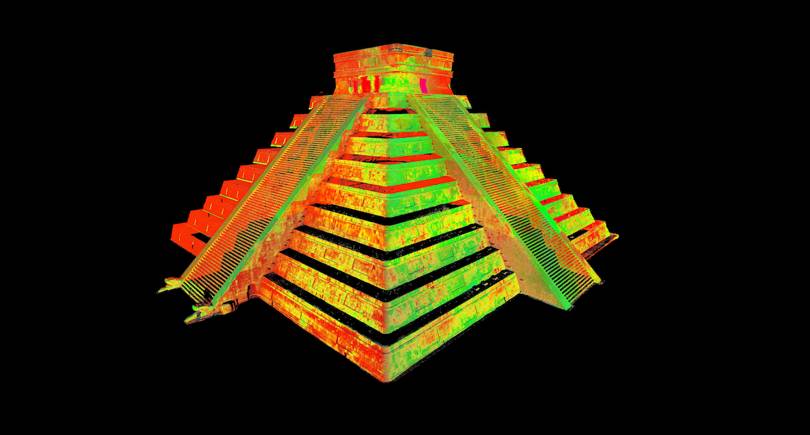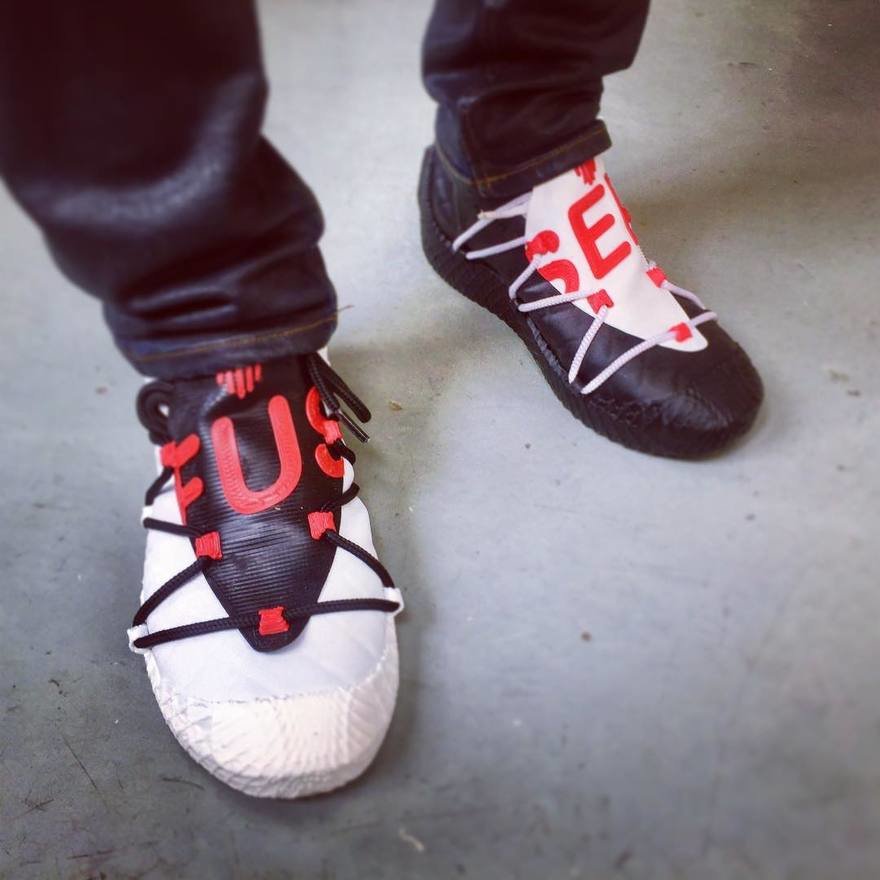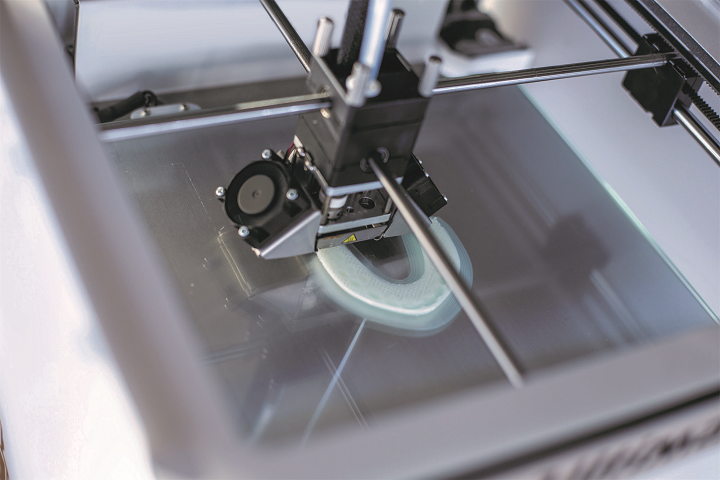How is 3D scanning saving heritage sites? How can 3D printing help survivors of human trafficking? Which city has the most active 3D printing scene? All this and more in the latest edition of Sliced including news from Ultimaker, Renishaw, NASA and Identify3D.
Saving archaeological wonders, Electron rockets, and celebrating Earth day
It is always interesting to see the ways 3D printing is influencing popular culture. The latest trailer for upcoming movie Hotel Artemis features a short clip of actor Sterling K. Brown 3D printing a gun. Besides the film’s questionable portrayal of 3D printing, we’re looking forward to seeing Jeff Goldblum play a criminal overlord.
Free-D is a company offering training in 3D printed jewelry design for women and girls who have been trafficked and sold into modern-day slavery.
Katherine Prescott, co-founder of the company, describes the difficulties faced by survivors of trafficking, “They don’t have a high level of skill or literacy skills, which means that job opportunities are really low, and it’s through the search of trying to find employment that many get taken advantage of.”
Google and CyArk, a non-profit established to ensure heritage sites are available to future generations, are producing an archive of threatened archaeological wonders.
CyArk was started by Ben Kacyra, after he witnessed the Taliban’s televised destruction of Buddhist statues in Bamiyan, Afghanistan. CyArk has primarily been using a combination of photogrammetry and LiDAR 3D scanning to build images of archaeological sites.

Airbus, in cooperation with Altran, an industrial engineering consultancy, has won the 2018 Crystal Cabin Award in the Material & Components category for a 3D printed aircraft info panel. The Crystal Cabin Award is the only international award for innovative aircraft cabin products.
A report from the Startup Genome and the Global Entrepreneurship Network is claiming that New York City has the most active 3D printing community in the world. James Patchett, president of the city’s Economic Development Corporation said “New York City’s vibrant tech industry is booming with record highs in companies, jobs and investment. There’s never been a better time to expand or start a company in New York City.”
Wondering what you can do to celebrate Earth Day on April 22? Robo 3D is running a competition in celebration of Earth day. The challenge, should you choose to accept it, it to “come up with an idea for something we could make and design that could help better this planet if we all united together and 3D printed it.”

Rocket Lab, a California-based aerospace manufacturer, is pushing back the first commercial launch of its light-class Electron rocket in New Zealand, to address fuelling problems. On Twitter, the company announced that the team “saw some unusual behavior with a motor controller.”
FUSED shoes are entirely 3D printed, using no glue or stitching. In addition, each shoe can be customized to a customer’s satisfaction on the company’s website. “We realized that 3D-printing offered advantages for footwear that went well beyond traditional footwear. It’s an exciting opportunity to realize both a totally new product and a circular retail concept.”

F1 in Schools and new MakerBot and Stratasys certifications
350,000 people descended on Washington, D.C., on April 6-8, for the USA Science and Engineering Festival. Engineers from the U.S. Marine Corps Systems Command (MCSC) took part in the three-day festival promoting interest in STEM subjects amongst the event’s college and high-school aged attendees. Karrin Felton, Engineering Competency manager at MCSC said “Many kids think [STEM] is boring or hard, but it’s a lot of fun. From [designing] the material in a helmet, to 3D printing replacement parts, to [information technology], there are so many opportunities for them to use their talents, interests and creativity to make our world better.”
MakerBot, that already has it 3D printers installed inover 7,000 schools, has launched a comprehensive 3D printing certification program for educators. MakerBot’s parent company, Stratasys, has also released a new certification program, designed to fulfill industry needs in North America by bridging the skills gap in additive manufacturing.
An all-girl student team from Edinburgh, at the Scottish Linlithgow Academy, made it through to the final of the 2018 “F1 in Schools” STEM competition. The competition culminates in a 20m track race, and is intended to foster interest in science and engineering amongst students. The team used CAD and 3D printing to design and produce their car.

Advancing 3D printing in Singapore, 3D printed Moto2 bikes
Singapore’s National Additive Manufacturing Innovation Cluster (NAMIC) and Maritime Port Authority (MPA) have signed a Memorandum of Understanding to collaborate on the digitalization and advancement of manufacturing in the maritime sector, specifically with 3D printing. Kenneth Lim, MPA’s Director said “Singapore is well-poised to leverage our R&D capabilities and serve as a test-bed for 3D printing technology.”
NASA’s Johnson Space Center (JSC) has recognized Made In Space Inc. (MIS) with their Small Business Prime Contractor of the Year Award. MIS is a space manufacturing company that has operated the Additive Manufacturing Facility aboard the International Space Station for the last two years. Mike Snyder, MIS co-founder, said “We’re honored to win the prestigious award [and] grateful for NASA’s confidence in our team and look forward to success with AMF and other programs for many years to come.”
German specialty chemicals company Evonik Industries has opened an Asia research hub in Singapore. The hub is performing resource efficiency research with a focus on 3D printing. It will also be working on tissue engineering for 3D bioprinting. Harald Schwager, Deputy Chairman of the Board for Evonik said “we are actively pursuing new opportunities to boost our international R&D activities and the opening of this research hub is a significant contribution to these efforts.”
Sciaky Inc., a provider of metal 3D printers, has delivered an Electron Beam Additive Manufacturing (EBAM) 110 system to Hitachi’s Global Research & Innovative Technology (GRIT) facility in Kumagaya, Japan. The EBAM 100 features a dual wirefeed configuration, allowing users to combine two metal alloys into a single melt pool creating custom alloy parts.
Identify3D, a San Francisco-based 3D printing software company is collaborating with SLM Solutions, a producer of metal 3D printers. Identify3D will provide data protection and contractual and manufacturing licensing for SLM’s 3D printers. This will secure all data involved in the engineering phase, protecting SLM’s digital IP, whilst providing traceability in the digital supply chain.
UK-based engineering firm Renishaw has renewed its sponsorship of the French Moto2 team, TransFIORmers. TransFIORmers is the only Moto2 team to use 3D printing for structural components. A 3D printed titanium “wishbone” forms a crucial part of the bike’s suspension. Chris Pockett, Renishaw Head of Communications said “In high-speed, high-performance applications like Moto2, the America’s cup and even the supersonic car, BLOODHOUND SSC, Renishaw’s additive manufacturing expertise has allowed teams to maximise performance and gain a competitive edge.”

Customised mouth-guards, carbon fiber prosthetics
BASF and Essentium Materials subsidiary TriFusion Devices have used BASF’s Ultramid carbon fiber reinforced polyamide, to produce 3D printed prosthetic leg sockets. Ultramid material enables small adjustments in increments of around 2-3mm throughout the life-cycle of the prosthetic, without weakening it. Traditional sockets do not easily accommodate modifications in the same way.
Dutch multinational DSM operating in the fields of health, nutrition and medical materials, has partnered with Dutch 3D printed mouth-guard producer, 3Dmouthguard. The companies are creating 3D printed custom-made mouth-guards on-demand. 3D scans of customers’ mouths are used with FFF, Ultimaker and Mass Portal 3D printers to create mouth-guards on the spot.

New 3D printing survey from Filaments.directory
A survey conducted by Filaments.directory, the largest 3D printing materials database, has found a 217 percent increase in the number of professional 3D printer users compared to 2016. There are many interesting findings in the survey, including that men made up 92 percent of the survey’s respondents, and 64 percent of users reported using 3D printing primarily for prototyping. The survey results should only be taken as a reflection of the Filaments.directory user-base, though the results hint at broader industry trends and demographics.
Vote in the 2018 3D Printing Industry Awards, before it closes.
Keep abreast of the latest 3D printing news. Subscribe to the 3D Printing Industry newsletter, follow us on Twitter, and like us on Facebook.
Post a job, or kick-start a career in 3D printing. The 3D Printing Industry Jobs board is live.
Featured image shows 3D models of the Chichén Itzá created using a combination of photogrammetry and LiDAR scanning. Image via CyArk.


